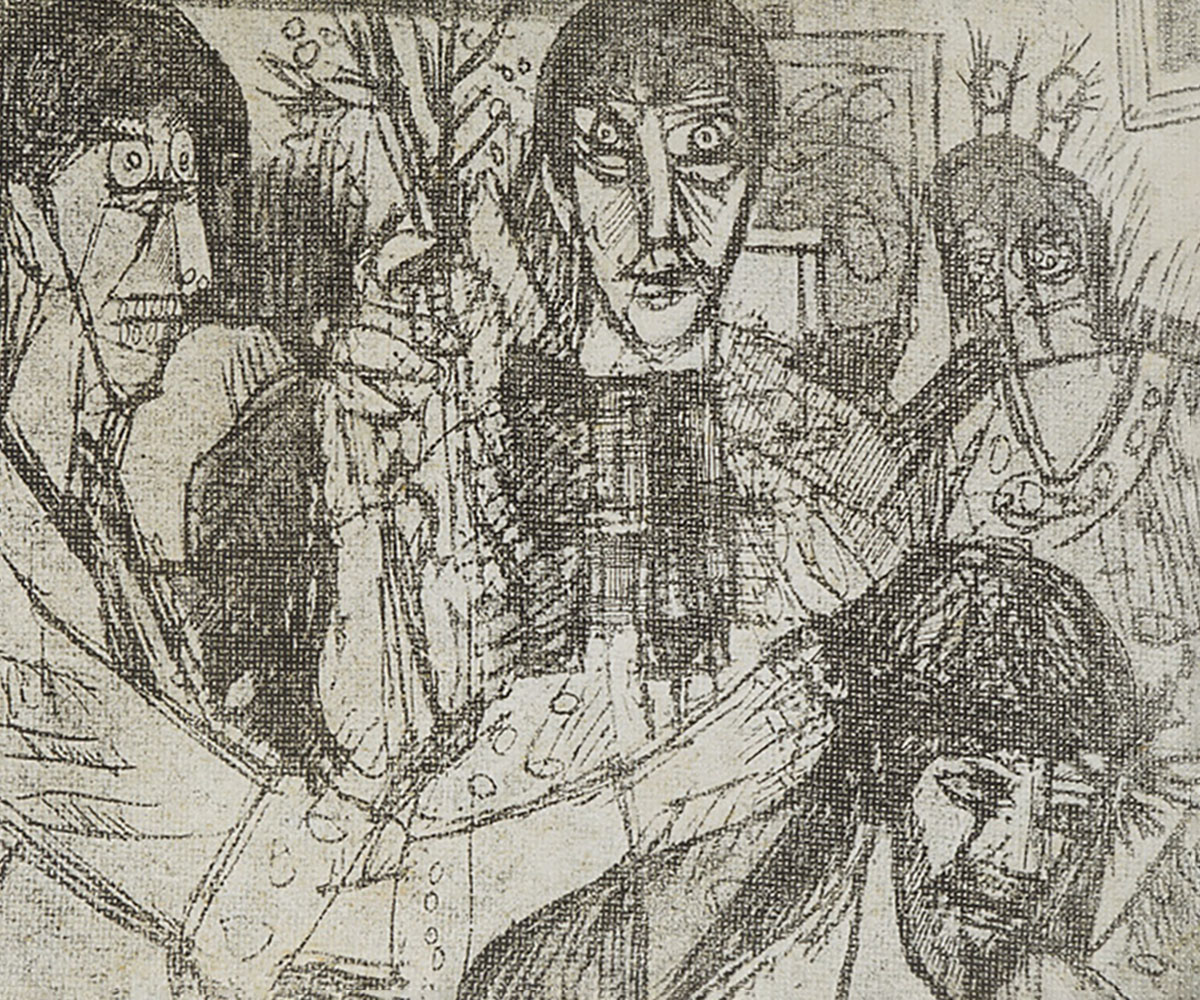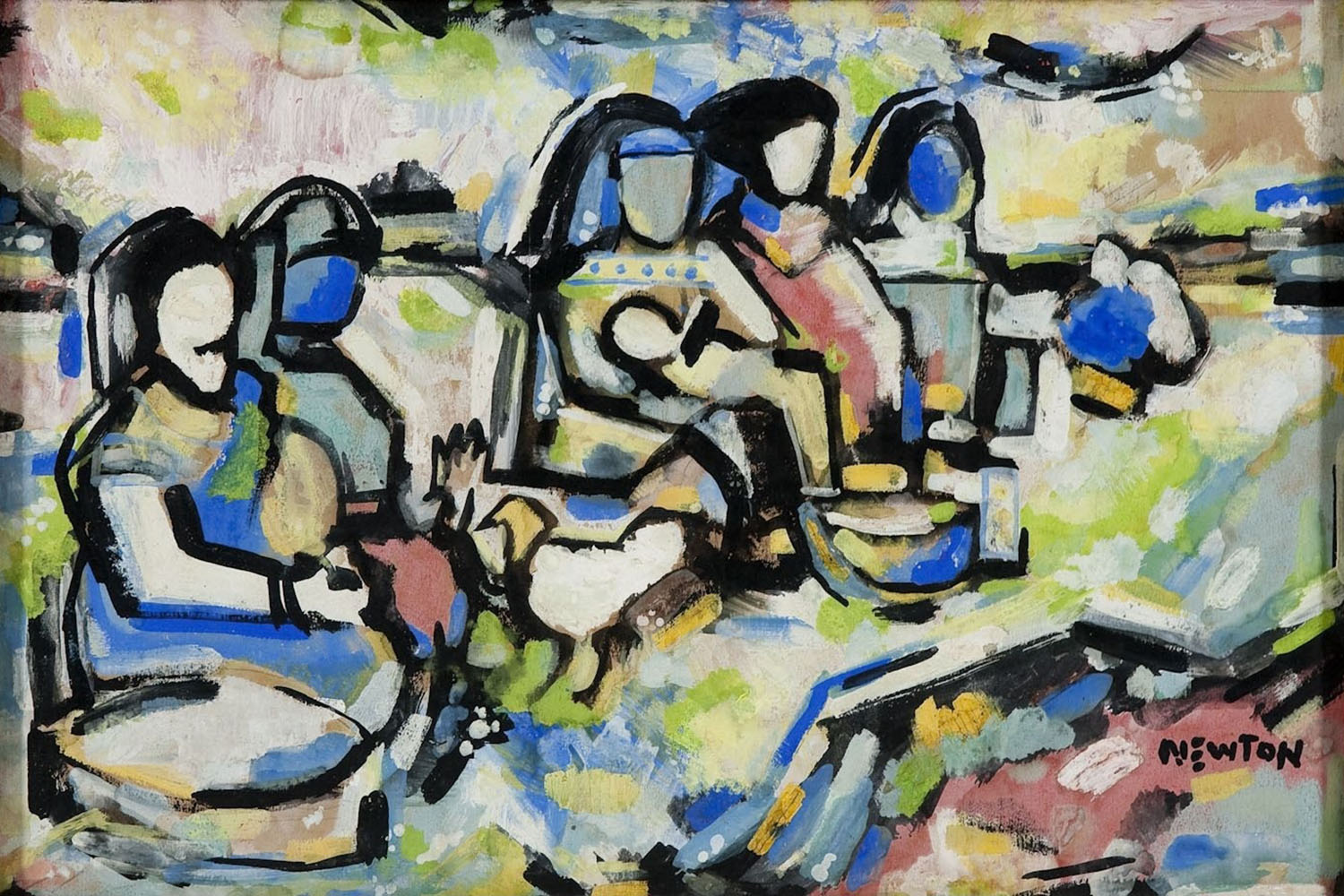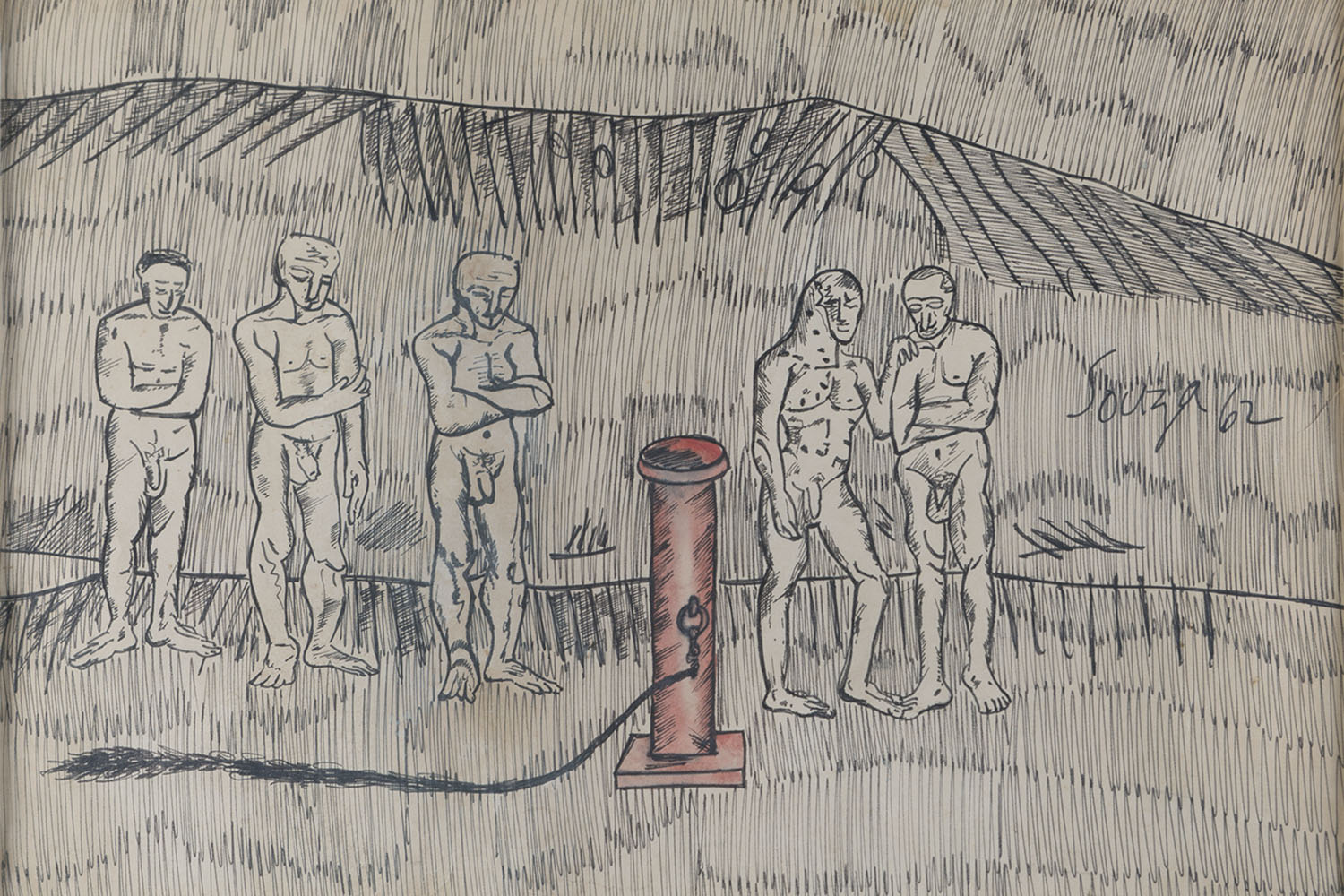ARTICLE
FN Souza
In 1947, the year of India’s independence, Souza, along with SH Raza, MF Husain, KH Ara, HA Gade and SK Bakre, founded the Bombay Progressive Artists’ Group (PAG). Souza wrote the group’s manifesto, stressing the need for artistic independence and freedom of expression. His political connections enabled the PAG to hold many of its early meetings at the offices of the CPI(M). However, around the time the PAG held an exhibition with the Bombay Art Society in 1949, he had begun questioning the ideologies of the group, denouncing their communist motivations and insisting that common aesthetic concerns instead be the unifying factor among the members.
In 1948, Souza exhibited at the Royal Academy of Arts, London, and moved to London the following year. However, owing to the financial uncertainty in the aftermath of the Second World War, Souza worked in obscurity until 1955, when his autobiographical essay ‘Nirvana of a Maggot’ was published in the London-based Encounter magazine. The publication was run by British poet and essayist Stephen Spender, who introduced Souza to the English art collector Peter Watson, resulting in some of Souza’s works being exhibited at the Institute of Contemporary Arts, London in 1954. Souza held his first solo exhibition in the same year at Gallery One, London, and went on to display his work alongside those of artists such as Francis Bacon and Henry Moore.
By this time, Souza had begun fusing elements from Christian iconography, bronze sculptures from the Chola period, temple carvings from Khajuraho and Mathura, and European Modernism, resulting in a style inspired by the post-War Art Brut movement and elements of British Neo-Romanticism. In 1955, Souza painted Birth, depicting a heavily pregnant woman lying naked on her back with her eyes closed, while a bearded figure in a red clerical robe positioned at her feet looks out at the viewer, and the window behind them reveals a cityscape suggestive of London. With the dark palette, the female nude, the sexual undertones of the image and the autobiographical quality of the priestly male figure, the painting represents many of the chief elements of his style. In 2008, it fetched a record auction price for an Indian artist’s work, and further surpassed it with its own resale in 2015 at almost double the price. His 1959 painting Crucifixion depicts more explicitly Souza’s preoccupation and struggle with his Catholic identity, showing a tortured Christ-like figure occupying the central space. With his typical deconstruction of conventional figural forms, he portrays Christ as a jagged black shape with an almost animal-like head, pierced with thorns and flanked by two smaller figures who may be seen as apostles.
Souza published his autobiography Words & Lines in 1959. In 1967, having received the substantial prize money of the Guggenheim International Award — then the largest amount given for the arts — Souza moved to New York. This move ushered in a marked change in his palette as he began incorporating bright, warm colours applied in thick layers, or impasto, and minimised the use of black in his work. This is seen in the American cityscapes he started painting, exemplified by the oil-on-canvas Oklahoma City (1971). Here the sharply defined forms of his earlier work are replaced by a loose, almost abstract composition bursting with colour. The city’s buildings and vegetation are rendered in large globules of paint squeezed directly from the tube and spread around the canvas in bold lines and patches, creating a vibrant, joyful effect. This period also saw Souza experiment with other media and techniques, such as manipulating printed images from magazines, catalogues and newspapers using chemicals, and drawing or painting over them. Though he visited India frequently, he continued to live and work in the USA until his death.
His work has been exhibited at many solo and group shows around the world, and his paintings are part of the collections of the Tate Modern, London, and the National Gallery of Modern Art, New Delhi. In 1987, the theatre director Ebrahim Alkazi curated a retrospective of his work, held jointly at Triveni Kala Sangam, Delhi and Jehangir Nicholson Gallery, Mumbai. In 2005, Tate Britain held a career retrospective titled Religion and Erotica; and in 2018 his works featured in a landmark retrospective of Indian Modern art curated by the Asia Society, New York.
Souza died in 2002 in Mumbai, at the age of seventy-seven.
Bibliography
Artiana. “Francis Newton Souza.” Biography. Accessed September 9, 2020. http://www.fn-souza.com/.
Avari, Nishad. “Francis Newton Souza — The ‘Enfant Terrible’ of Modern Indian Art.” Christie’s. Accessed September 9, 2020. https://www.christies.com/features/Francis-Newton-Souza-collecting-guide-10035-1.aspx.
Christie’s. “Francis Newton Souza (1924-2002) | Oklahoma City.” Accessed September 9, 2020. https://www.christies.com/lotfinder/Lot/francis-newton-souza-1924-2002-oklahoma-city-6142292-details.aspx.
Christie’s. “Francis Newton Souza (1924-2002) | Pietà.” Accessed September 9, 2020. https://www.christies.com/lotfinder/Lot/francis-newton-souza-1924-2002-pieta-5717639-details.aspx.
Dalmia, Yashodhara. Indian Contemporary Art: Post Independence. New Delhi: Vadehra Art Gallery, 2010.
Grimes, William. “Overlooked No More: F.N. Souza, India’s Anti-Establishment Artist.” The New York Times, April 9, 2020. https://www.nytimes.com/2020/04/09/obituaries/fn-souza-overlooked.html.
Mitter, Partha. Indian Art. Oxford: Oxford University Press, 2001.
Sinha, Gayatri. Art and Visual Culture in India: 1857–2007. Mumbai: Marg Foundation, 2009.
Souza in the 40’s. Exhibition Catalogue. Grosvenor Gallery and Saffronart, 2019. https://www.grosvenorgallery.com/usr/library/documents/main/souza-in-the-40-s-ecatalogue.pdf.











